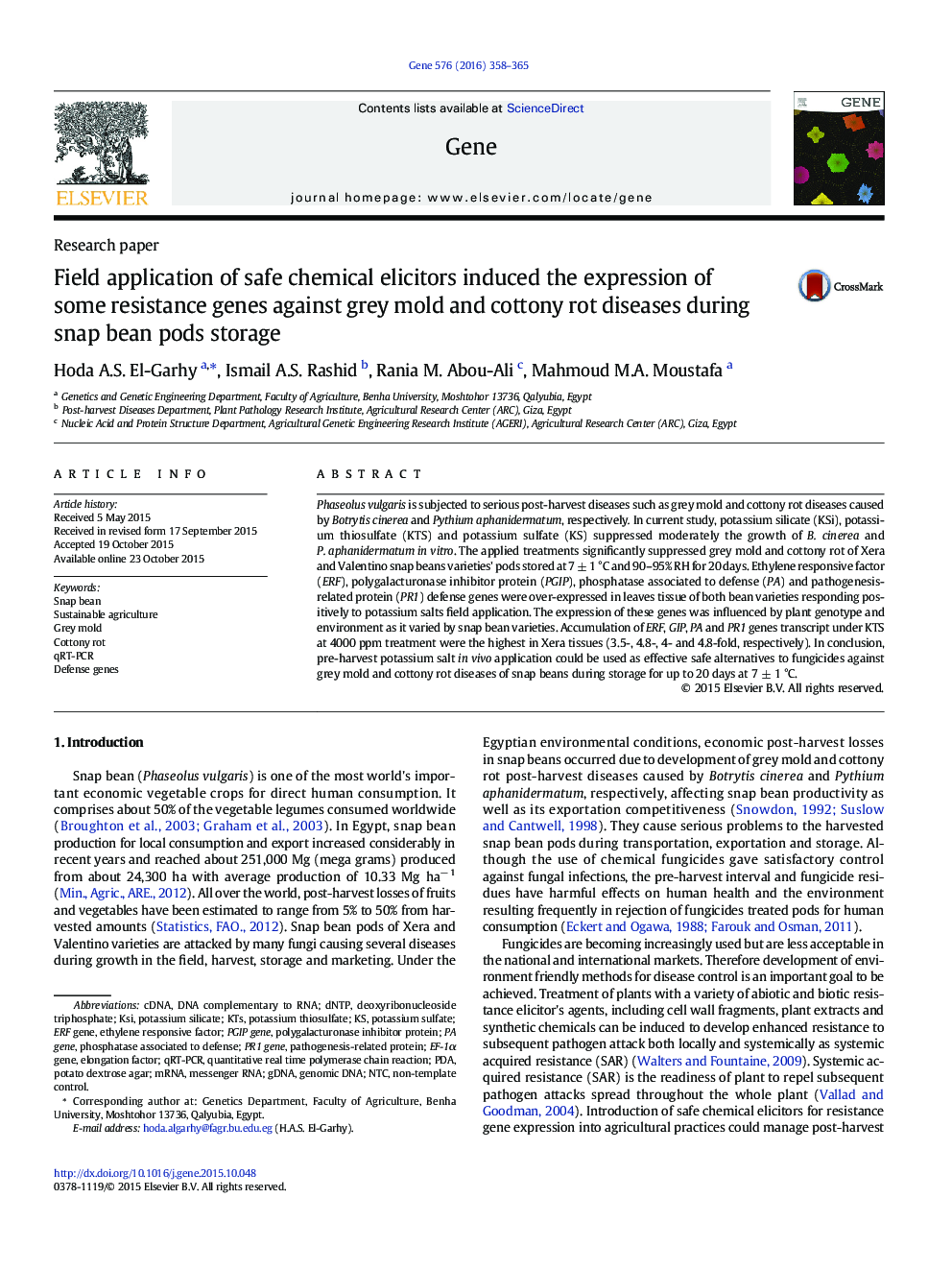| Article ID | Journal | Published Year | Pages | File Type |
|---|---|---|---|---|
| 2815269 | Gene | 2016 | 8 Pages |
•Minimizing the damage to environment and health via sustainable agriculture•Promotion of defense genes expression in snap bean plants to induce SAR•Controlling post-harvest storage diseases by using safe elicitors•Extending snap bean pods' shelf life via field application of potassium salts
Phaseolus vulgaris is subjected to serious post-harvest diseases such as grey mold and cottony rot diseases caused by Botrytis cinerea and Pythium aphanidermatum, respectively. In current study, potassium silicate (KSi), potassium thiosulfate (KTS) and potassium sulfate (KS) suppressed moderately the growth of B. cinerea and P. aphanidermatum in vitro. The applied treatments significantly suppressed grey mold and cottony rot of Xera and Valentino snap beans varieties' pods stored at 7 ± 1 °C and 90–95% RH for 20 days. Ethylene responsive factor (ERF), polygalacturonase inhibitor protein (PGIP), phosphatase associated to defense (PA) and pathogenesis-related protein (PR1) defense genes were over-expressed in leaves tissue of both bean varieties responding positively to potassium salts field application. The expression of these genes was influenced by plant genotype and environment as it varied by snap bean varieties. Accumulation of ERF, GIP, PA and PR1 genes transcript under KTS at 4000 ppm treatment were the highest in Xera tissues (3.5-, 4.8-, 4- and 4.8-fold, respectively). In conclusion, pre-harvest potassium salt in vivo application could be used as effective safe alternatives to fungicides against grey mold and cottony rot diseases of snap beans during storage for up to 20 days at 7 ± 1 °C.
